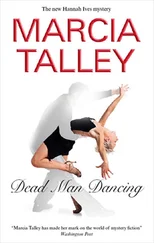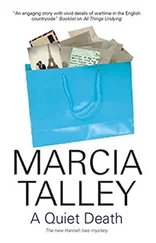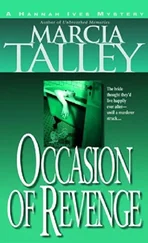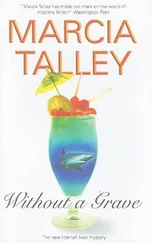Marcia Talley - Sing It to Her Bones
Здесь есть возможность читать онлайн «Marcia Talley - Sing It to Her Bones» весь текст электронной книги совершенно бесплатно (целиком полную версию без сокращений). В некоторых случаях можно слушать аудио, скачать через торрент в формате fb2 и присутствует краткое содержание. Жанр: Детектив, на английском языке. Описание произведения, (предисловие) а так же отзывы посетителей доступны на портале библиотеки ЛибКат.
- Название:Sing It to Her Bones
- Автор:
- Жанр:
- Год:неизвестен
- ISBN:нет данных
- Рейтинг книги:4 / 5. Голосов: 1
-
Избранное:Добавить в избранное
- Отзывы:
-
Ваша оценка:
- 80
- 1
- 2
- 3
- 4
- 5
Sing It to Her Bones: краткое содержание, описание и аннотация
Предлагаем к чтению аннотацию, описание, краткое содержание или предисловие (зависит от того, что написал сам автор книги «Sing It to Her Bones»). Если вы не нашли необходимую информацию о книге — напишите в комментариях, мы постараемся отыскать её.
Sing It to Her Bones — читать онлайн бесплатно полную книгу (весь текст) целиком
Ниже представлен текст книги, разбитый по страницам. Система сохранения места последней прочитанной страницы, позволяет с удобством читать онлайн бесплатно книгу «Sing It to Her Bones», без необходимости каждый раз заново искать на чём Вы остановились. Поставьте закладку, и сможете в любой момент перейти на страницу, на которой закончили чтение.
Интервал:
Закладка:
Skirting the marina to our right, the road followed the water, snaking past the boat slips off docks A, B, and C and ending at a small parking lot. A large grassy area extended well beyond the edge of the parking lot, where boats of all types and sizes were stored, propped up by triangular wooden braces and paint-spattered metal tripods. To my surprise, Connie steered straight through the lot and onto the grass and began to weave cautiously between the boats.
“Where on earth are you going, Connie?”
“To park.”
“Excuse me, but wasn’t the parking lot back there?”
“When your boat’s out of the water and you’re working on it, it’s much more convenient to drive up and park right next to it.”
As we snaked through the land-locked fleet, I gazed out my window at a confusion of masts and rigging; some boats had been placed so close together that the bow pulpit of one vessel extended practically into the rigging of another. Beyond the boats, nearer the water, I thought I recognized the shed that Hal had pointed out to us when we went sailing, where he said Pegasus had been hauled.
Connie parked between a small blue cabin cruiser from Wilmington, Delaware, named My Mink and a large, nameless wooden vessel being painted dark green. When we climbed out of the car, seagulls were circling the area. One of them settled near an empty paint can and pecked halfheartedly at a discarded sandwich wrapper. I thought Connie’d feel right at home here among the boats and the birds, the fresh, sharp odor of paint and new varnish. From somewhere nearby the familiar whine of a power sander momentarily drowned out the cries of two angry gulls fighting over the remains of a hamburger bun.
“Hal mentioned he’d been experiencing chronic blistering problems on Pegasus, ” Connie said as we wound our way on foot through the maze of boats toward the shed. “He’s had to repair her several times.” The shed loomed before us, an enormous white Conestoga wagon top, open at both ends.
Inside, the heat intensified. I expected the air to be heavy with moisture, like a greenhouse, but way overhead plantation-style fans nudged any stagnant air gently downward, to be swept away by the cool breezes that passed through the open ends of the shed.
Pegasus was a large boat, longer than Sea Song , I suspected, and it nearly filled the space, although there was room to work around her on all sides. I stood with my back resting against the vinyl-coated canvas wall of the shed and admired Hal’s boat. From the varnished teakwood trim to the six-inch-wide blue stripe that circled her bright white hull, she was a perfectly proportioned beauty.
“Nice racing stripe,” I commented.
“It’s called a boot top,” she snapped. Connie was still mad at me.
“Why?”
Connie stood at the stern, considering the rudder. “I don’t have the foggiest.”
“What kind of boat is it, Connie?”
“A Cal 40. Lovely old thing. They don’t make them anymore.” She took the rudder in both hands and wiggled it from side to side. “They’re great cruising and racing boats. Hal loves to race.”
I strolled around Pegasus , examining the hull. Like the other boats I’d seen, Pegasus stood upright, cradled between metal jack stands, curious V-shaped contraptions padded with carpet remnants. Below the white hull, the keel, painted brick red, extended down like an inverted shark fin, touching the ground.
Connie circled the boat twice, hands clasped behind her back, while I stood to one side, wondering what she was looking for. She started tapping on the hull with her knuckles.
“Why are you doing that?” I asked.
“Remember when Hal said his hull was delaminated? I’m checking for that. You know how you tap the wall to find a stud when you’re going to hang a picture? Same thing, except I’m listening for the hollow sound you get when the layers of wood that form the hull separate and get all mooshy.” Connie tapped her way all around the boat with one of her car keys, too, making sharp, bright cracking sounds. Nothing sounded hollow to me.
Then the tapping stopped. “Hmm, that’s odd.”
“What?”
“Come here, Hannah. Walk around the boat and tell me what you see.”
I circled Pegasus , looking at the hull and the keel, feeling like a total dummy. “What the hell am I looking for?”
“Did you notice that one side of the keel has barnacles on it? On the other side the bottom paint is fresh.” I could see what she was talking about. The side of the keel nearest me was pockmarked by circular shells the size of my thumbnail. The other side was smooth as a baby’s cheek.
“But Hal said it needed repair.”
“I know, but you’d expect to see blistering on both sides of the keel, not just one. And another strange thing… see that scum line?” She pointed to a brownish green ring that circled the boat several inches below the boot top, like the ring around the inside of a bathtub.
“What’s so odd about that?”
“Cal ’40s are heavy cruising boats. She ought to be riding lower in the water. This boat’s riding high.”
“Does that mean she’s lighter than she should be?”
“Exactly! Hand me that rag, will you?” Connie indicated a tattered, paint-stained undershirt that had been draped over a nearby sawhorse. I snatched it up with two fingers and tossed it to her. Connie began to rub vigorously on the freshly painted keel until the rag was red with paint particles. After a bit she stopped rubbing and bent over, her face close to the surface of the keel, then stepped back and surveyed the spot from several angles. “Well, I’ll be damned.”
“What?”
“There’s fresh fiberglass here, right in the middle of what should be a solid lead keel.” I looked where she pointed and saw the hint of a rectangle, just a shadow about the size of a suitcase beneath the brick red bottom paint. “See, it’s duller than the rest of the keel. I suspect someone was in a hurry, and it wasn’t primed first.”
Connie looked at me with wide, startled eyes. “Shit, Hannah. Bill was right. Somebody’s taken a chunk out of the keel and then tried to cover it over. Someone could be stashing drugs in there.”
Somebody. Someone . Why were we pussyfooting around the issue? Who else could it be but Hal? I didn’t want to believe it. “But why go to all that trouble, Connie? Couldn’t you just hide drugs somewhere inside the boat? You could build a false bottom in one of the hatches. Hell, you could hide tons of illegal substances in the bilge.”
Connie shook her head. “The coast guard is trained to look for things like that. Lockers shorter than they should be. Fake water tanks. But this compartment would be under the water and almost impossible to detect.”
“Maybe Hal doesn’t know about it.” I recalled his gentle manner, his smile, the touch of his hand.
“Not a chance. He does all the work on Pegasus himself.”
Perhaps it was a reaction to breathing the chemicals in the bottom paint, but I doubted it. I hadn’t felt so sick to my stomach since my last chemotherapy session. It nauseated me that I’d actually entertained the idea, however briefly, of cheating on my husband with a man who could well turn out to be a drug lord.
Leaving Connie on her own with Pegasus , I ran from the shed, my stomach churning. Gulping air, I located a grassy spot under a tree and knelt down, resting my forehead against the smooth bark. When I judged that the danger of throwing up was past, I raised my head and looked around. Dozens of masts cast long shadows across the boatyard, and I watched a whole row of shadows disappear, one by one, as the sun dipped behind a patch of woods that bordered the boat yard.
Читать дальшеИнтервал:
Закладка:
Похожие книги на «Sing It to Her Bones»
Представляем Вашему вниманию похожие книги на «Sing It to Her Bones» списком для выбора. Мы отобрали схожую по названию и смыслу литературу в надежде предоставить читателям больше вариантов отыскать новые, интересные, ещё непрочитанные произведения.
Обсуждение, отзывы о книге «Sing It to Her Bones» и просто собственные мнения читателей. Оставьте ваши комментарии, напишите, что Вы думаете о произведении, его смысле или главных героях. Укажите что конкретно понравилось, а что нет, и почему Вы так считаете.












